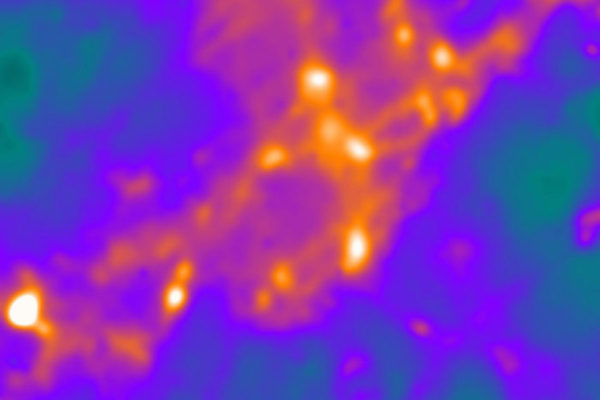Scientists get closer look at living nerve synapses
The brain hosts an extraordinarily complex network of interconnected nerve cells that are constantly exchanging electrical and chemical signals at speeds difficult to comprehend. Now, scientists at Washington University School of Medicine in St. Louis report they have been able to achieve — with a custom-built microscope — the closest view yet of living nerve synapses.
Fat signals control energy levels in the brain
An enzyme secreted by the body’s fat tissue controls energy levels in the brain, according to new research led by Shin-ichiro Imai, MD, PhD, of the School of Medicine. The findings, in mice, underscore a role for the body’s fat tissue in controlling the brain’s response to food scarcity, and suggest there is an optimal amount of body fat for maximizing health and longevity.
Mouse study offers new clues to cognitive decline
New research suggests that certain types of brain cells may be “picky eaters,” seeming to prefer one specific energy source
over others. The finding has implications for understanding the cognitive decline seen in aging and degenerative diseases such as Alzheimer’s and multiple sclerosis.
Remembering to remember supported by two distinct brain processes
New research from Washington University in St. Louis sheds light on the brain mechanisms that underlie a type of memory, known as prospective memory, revealing two distinct processes that support our ability to remember to remember.
Brain’s flexible hub network helps humans adapt
New research from Washington University in St. Louis offers compelling evidence that a well-connected core brain network based in the lateral prefrontal cortex and the posterior parietal cortex — parts of the brain most changed evolutionarily since our common ancestor with chimpanzees — contains “flexible hubs” that coordinate the brain’s responses to novel cognitive challenges.
Working memory key to breakthroughs in cognitive neuroscience
Unraveling the mysteries of the human brain, and the mind it gives rise to, is within the reach of modern science, suggests a forthcoming issue of the journal Neuroscience. The special issue explores how sophisticated working memory processes — from the firing of a single neuron to the activation of multiple brain regions — help shape our understanding of the world, says issue co-editor Grega Repovs, a visiting post-doctoral fellow at Washington University in St. Louis.
Working memory key to breakthroughs in cognitive neuroscience
Unraveling the mysteries of the human brain, and the mind it gives rise to, is within the reach of modern science, suggests a forthcoming issue of the journal Neuroscience. The special issue explores how sophisticated working memory processes — from the firing of a single neuron to the activation of multiple brain regions — help shape our understanding of the world, says issue co-editor Grega Repovs, a visiting post-doctoral fellow at Washington University in St. Louis. More…
Working memory key to breakthroughs in cognitive neuroscience
Unraveling the mysteries of the human brain, and the mind it gives rise to, is within the reach of modern science, suggests a forthcoming issue of the journal Neuroscience. The special issue explores how sophisticated working memory processes — from the firing of a single neuron to the activation of multiple brain regions — help shape our understanding of the world, says issue co-editor Grega Repovs, a visiting post-doctoral fellow at Washington University in St. Louis. More…


